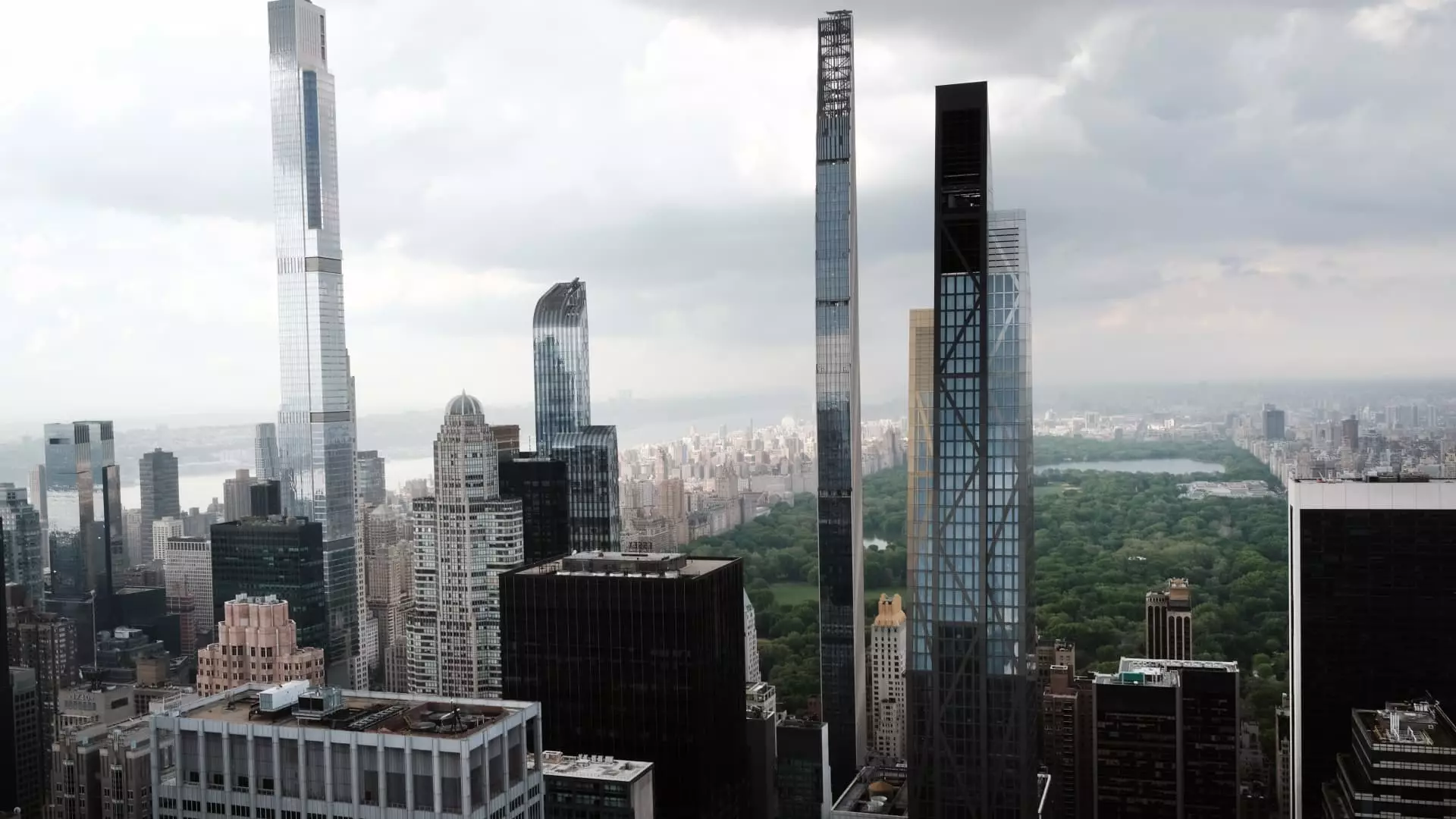Manhattan’s real estate market has recently seen an explosive transformation, with a 29% increase in apartment sales in the first quarter compared to the same timeframe last year. This surge corresponds to a significant shift in investor behavior, particularly among the wealthy who have shifted their focus from volatile stock markets to the supposed safety and stability of real estate. The total value of closed sales skyrocketed to an astonishing $5.7 billion, showing an impressive 56% increase year-over-year. This remarkable leap can primarily be attributed to high-end buyers investing in luxury properties, highlighting a growing trend that could reshape the future of Manhattan’s residential real estate landscape.
The All-Cash Phenomenon
In a market often influenced by financing, the statistic that 58% of the sales this quarter were all-cash transactions speaks volumes about the current state of the affluent class. The luxury segment, where properties priced over $3 million saw a staggering 90% of sales from cash buyers, exemplifies the financial dominance of the ultra-wealthy. This demographic is not only insulated from the turbulence created by rising mortgage rates but is also leveraging this moment to acquire prime assets. Such patterns challenge traditional notions of asset mobility, suggesting instead that the wealthy are opting for real estate as a safe haven against potential downturns in the stock market.
Market Decoupling: A New Era for Luxury Real Estate
For years, Manhattan’s real estate has been tethered closely to the whims of the stock market, but recent trends suggest that these ties are loosening. As we witness growing economic uncertainty, the allure of hard assets like real estate becomes more compelling for wealthy buyers looking for security. The convergence of macroeconomic factors, including back-to-office mandates from major corporations and a renewed influx of luxury homebuyers returning to Manhattan, signifies a transformative shift in consumer behavior. What we are observing is an emerging trend where real estate becomes a strategic asset, prioritized over financial markets tied to greater fluctuations.
Emerging Trends: The “Boomerang Wealthy” and Generational Shifts
The growing influx of what real estate agents refer to as “boomerang wealthy” individuals, those who temporarily relocated during the pandemic but are now returning to New York, is a noteworthy phenomenon. A notable demographic shift arises as affluent individuals from places like Florida and California, realizing the unmistakable allure of Manhattan, opt to invest back in the market. This resurgence is accompanied by what experts term the “great wealth transfer,” where trillions of dollars flow from baby boomers to their heirs. It is increasingly common to see young buyers equipped with trust fund money stepping into the marketplace, and this trend underscores a long-term evolution in real estate investment patterns.
Weakness in the Mid-Market: A Speculative Rift
While the ultra-high-end sector is thriving, the dynamics shift dramatically within the mid-market range of Manhattan real estate, particularly in properties priced between $1 million and $3 million. Data suggests a decline of 10% in signed contracts for this segment compared to the prior year. A speculative rift appears to be forming where buyers in the upper echelons of wealth are monopolizing favorable conditions, while those in the mid-range struggle amidst economic noise. This stark dichotomy in market performance raises questions about accessibility and affordability within Manhattan’s broader real estate context, suggesting a potential disconnect between the upper-income brackets and those aspiring to reach that echelon.
Statistical and Emotional Insights into Future Growth
The data reflects not just numbers but a palpable shift in sentiment among buyers. The first quarter foreshadows an optimistic outlook, with strong signed contracts in March indicating a promising trajectory for luxury properties. The tripling of contracts for apartments priced over $10 million signals that the ultra-wealthy are firmly cementing their stakes in Manhattan’s skyline. With such indicators, industry leaders are calling this market not only steady but thriving—an exciting notion indeed. However, we must critically acknowledge that sales figures, while impressive, include a certain amount of lag in timing, where current economic uncertainties may yet not be fully represented.
In essence, Manhattan’s luxury real estate market stands as a testament to the impact of wealth concentration and shifting buying patterns amid tumultuous economic conditions. As we navigate this landscape, the ideological underpinnings of wealth, investment strategy, and market volatility remain critical points of discussion for buyers and analysts alike.

